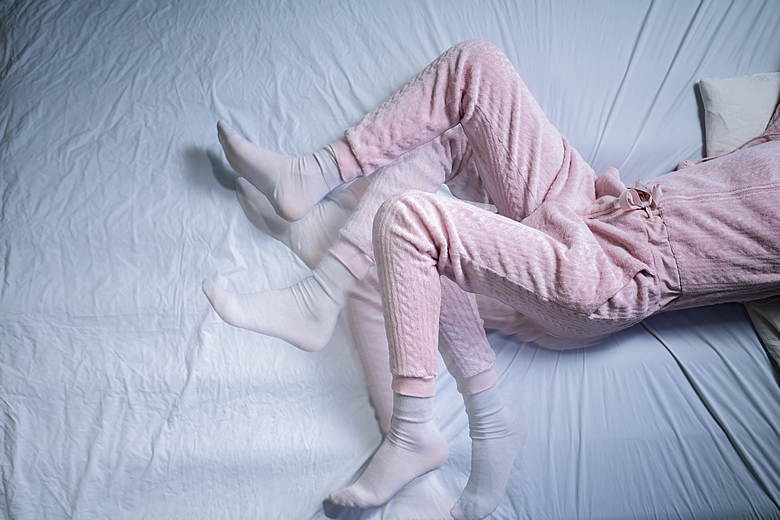Fatigue & Fibromyalgia Are Optional, Part 3: Sleep Apnea and Restless Leg Syndrome

As we continue our "Fatigue & Fibromyalgia Are Optional" series, I will be presenting the Brain Fog Friendly Summaries from my newest edition of From Fatigued to Fantastic, to show you just how easy learning what you need to know can be.
Sleep Apnea and Restless Leg Syndrome
BFF Summary
- Anyone who has high blood pressure, snores, falls asleep easily during the day (especially while driving), has a shirt collar size of 17 inches or larger, or is overweight should consider testing for sleep apnea.
- If you tend to scatter your sheets and blankets, and especially if you tend to kick your bed partner or if you note that your legs tend to feel jumpy and uncomfortable at rest at night, you may have restless leg syndrome (RLS).
- People who have an iron test (called a "Ferritin") under 60 will find that their legs are calmer during sleep if they supplement with iron. Supplementing with magnesium can also help calm jumpy legs
The Poor Man's Sleep Study
Doing a sleep study (called a polysomnogram) in a sleep lab can cost upward of $2,000—and sometimes your insurance company will make your life miserable trying to get them to pay for it. If you get one, be sure to have your insurance company preauthorize the test. The diagnoses of fatigue, daytime somnolence, snoring, and high blood pressure should be enough to get them to cover the study.
Another alternative? Set up a video camera at the foot of your bed to record yourself while you're sleeping. Position it so that you can see both your feet and your face. Then hit record and go to bed with only a sheet over you (you'll pull the blanket on later when you're sleeping, so don't worry). The next day, watch the video. Do you have periods where you snore and stop breathing? If yes, is it only when you're lying on your back, or does it occur in any position? About how many times during the hour does it happen? If more than a few times during the hour, get the sleep study done doing a "split night" study. Also check to see if your legs are jumpy and if it seems like this leg jumpiness disturbs your sleep. If yes, ask your physician to treat for restless leg syndrome (see below).
In addition, watching the video is a good way to help you fall asleep.
The Tennis Ball Cure for Sleep Apnea and Snoring
Avoid sleeping on your back if the video shows that this is usually the position where you snore and have sleep apnea. Do this by taking a tennis ball, putting it into a cloth pocket, and then sewing or pinning it to the mid back of your pajama shirt or a tight T-shirt. The tennis ball makes lying on your back uncomfortable, forcing you to roll onto your side or stomach without waking you. This works a lot better than having your spouse repeatedly jab you in the side during the night.

Jacob Teitelbaum, M.D. is one of the most frequently quoted post viral CFS, fibromyalgia, energy, sleep and pain medical authorities in the world. He is the author of 12 books including You Can Heal from Long Covid, the best-selling From Fatigued to Fantastic!, Pain Free 1-2-3, The Complete Guide to Beating Sugar Addiction, Real Cause Real Cure, The Fatigue and Fibromyalgia Solution, and the popular free Smart Phone app Cures A-Z. He is the lead author of eight research studies and three medical textbook chapters on effective treatment for fibromyalgia and chronic fatigue syndrome. Dr. Teitelbaum appears often as a guest on news and talk shows nationwide, including past appearances on Good Morning America, The Dr. Oz Show, Oprah & Friends, CNN, and FoxNewsHealth.
Websites: Vitality101.com | EndFatigue.com
Facebook Support Group: Recovering from Fibromyalgia, Chronic Fatigue, and Long COVID
Facebook Page | Instagram
